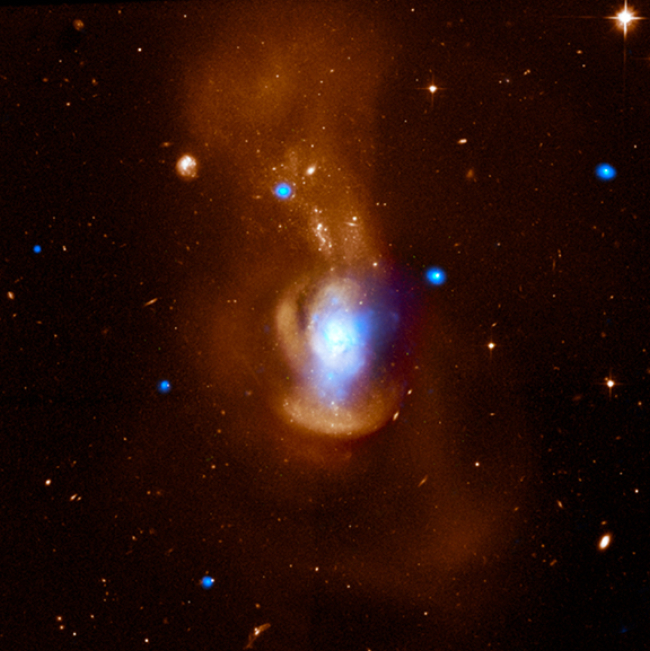
 Credit: X-ray: NASA/CXC/Univ of Iowa/P.Kaaret et al.; Optical: NASA/ESA/STScI/Univ of Iowa/P.Kaaret et al.
Credit: X-ray: NASA/CXC/Univ of Iowa/P.Kaaret et al.; Optical: NASA/ESA/STScI/Univ of Iowa/P.Kaaret et al.
The Birth and Death of Stars
Billions of stars form in galaxies. Far fewer can turn into neutron stars or black holes after burning out their nuclear fuel and exploding as supernovae. But what's the actual tie-in between the formation of neutron stars and the birth of their progenitors? A recent survey of select galaxies using the Chandra X-ray Observatory to measure the population of dead stars from their X-ray emission, plus detailed observations with the Hubble Space Telescope to study the population of newly-formed stars shows in some detail the connection between the birth and death of stars. The image above, a composite X-ray and optical image of the Medusa galaxy, shows hot plasma produced by neutron stars and black holes in blue, along with the optical emission in orange. This study shows that both the number of bright X-ray sources and their average brightness are apparently related to the rate at which stars formed, and that only one ton of gas gets pulled onto a stellar mass black hole or neutron star per million tons of gas that forms stars.
Published: March 23, 2009
<
HEA Dictionary ● Archive
● Search HEAPOW
● Other Languages
● HEAPOW on Facebook
● Download all Images
● Education ● HEAD
>
Each week the HEASARC
brings you new, exciting and beautiful images from X-ray and Gamma ray
astronomy. Check back each week and be sure to check out the HEAPOW archive!
Page Author: Dr. Michael F. Corcoran
Last modified Tuesday, 27-Feb-2024 10:06:47 EST


